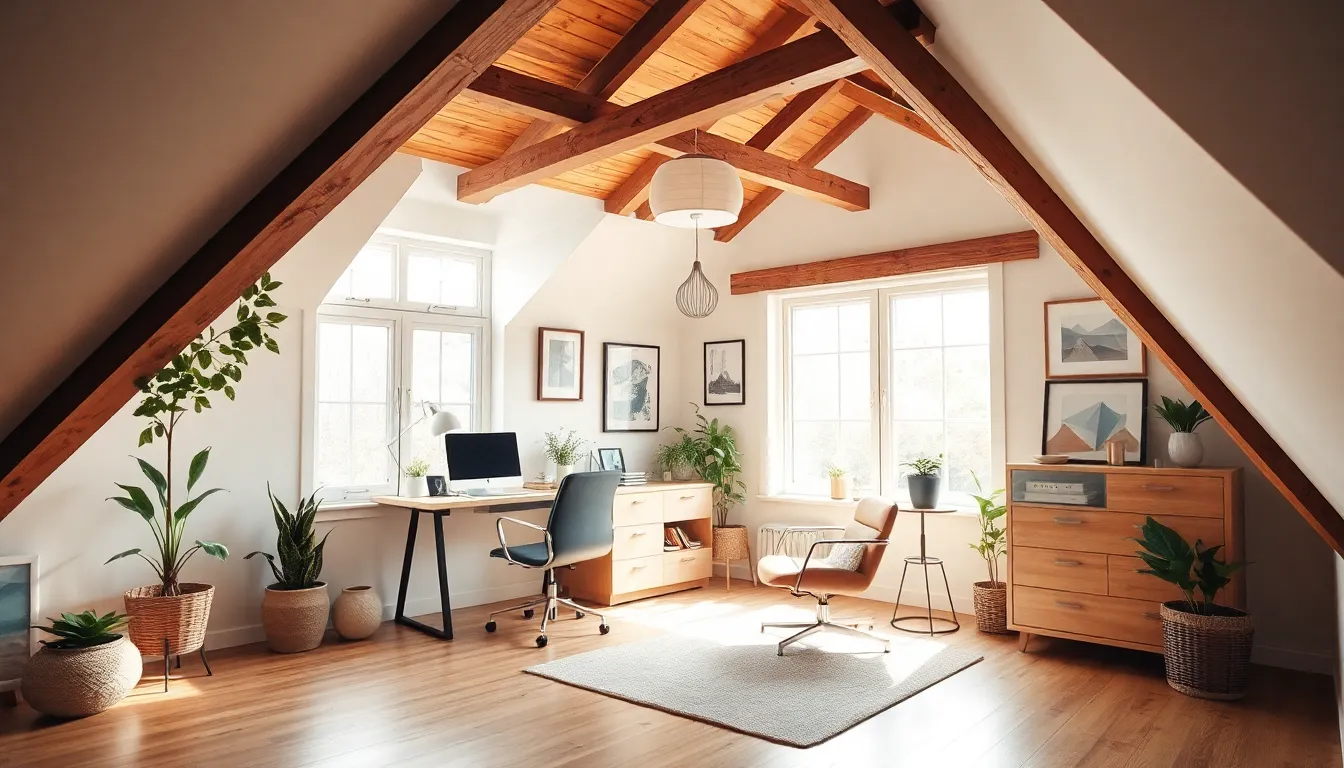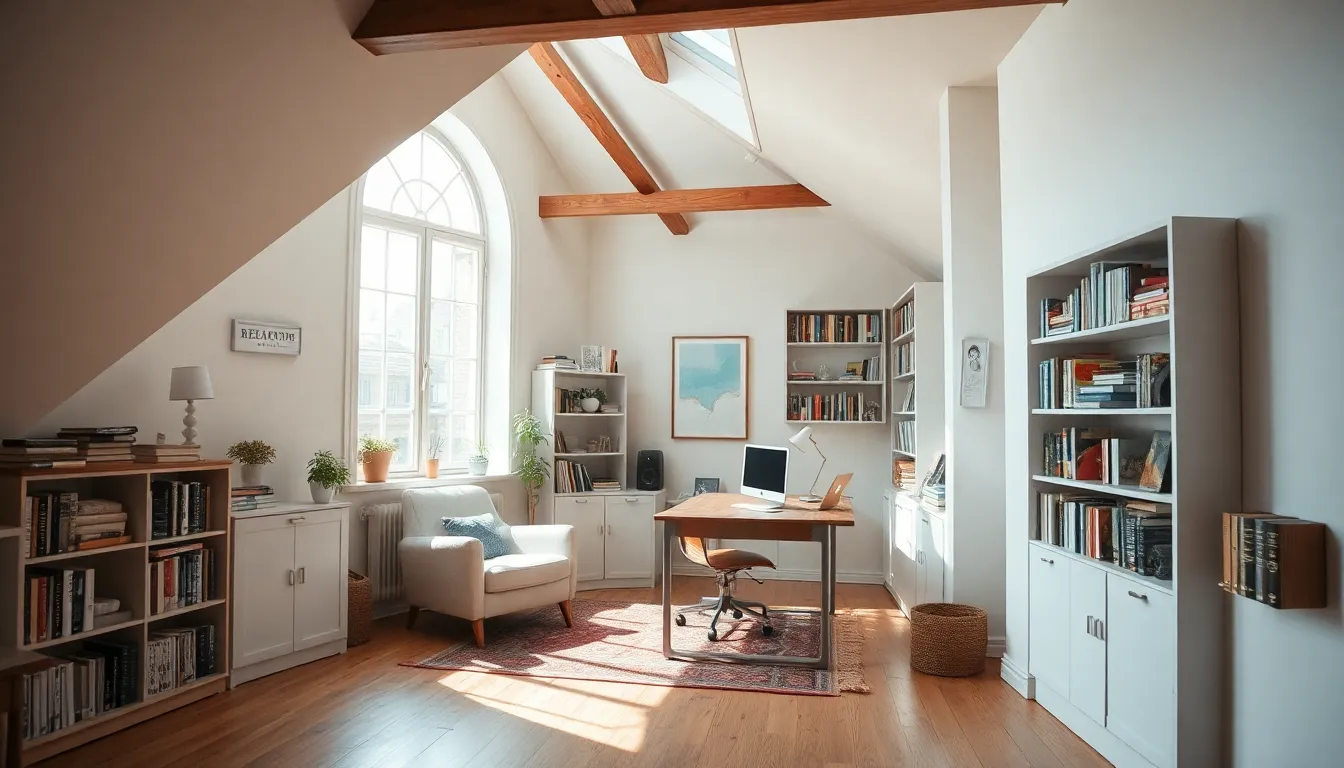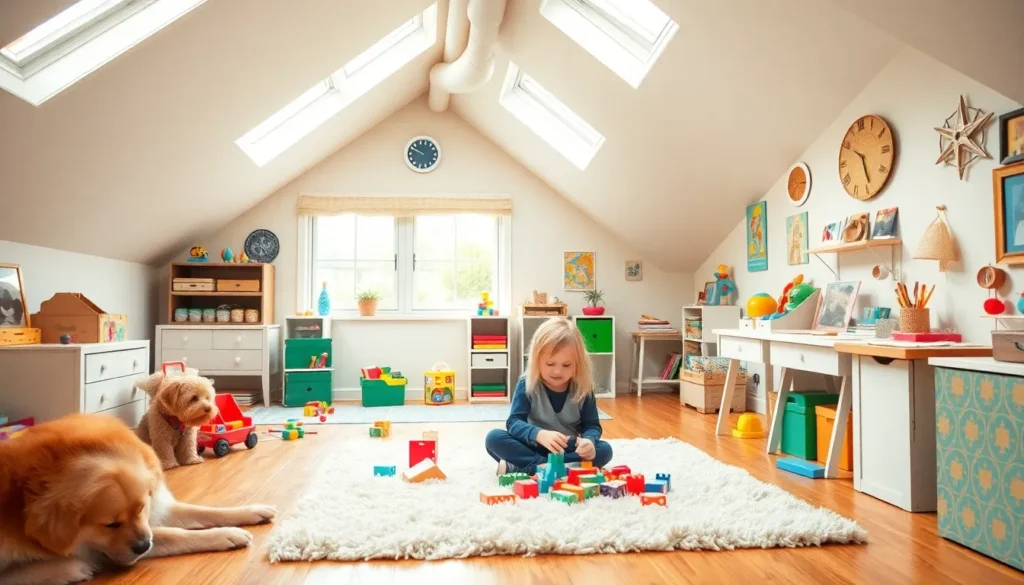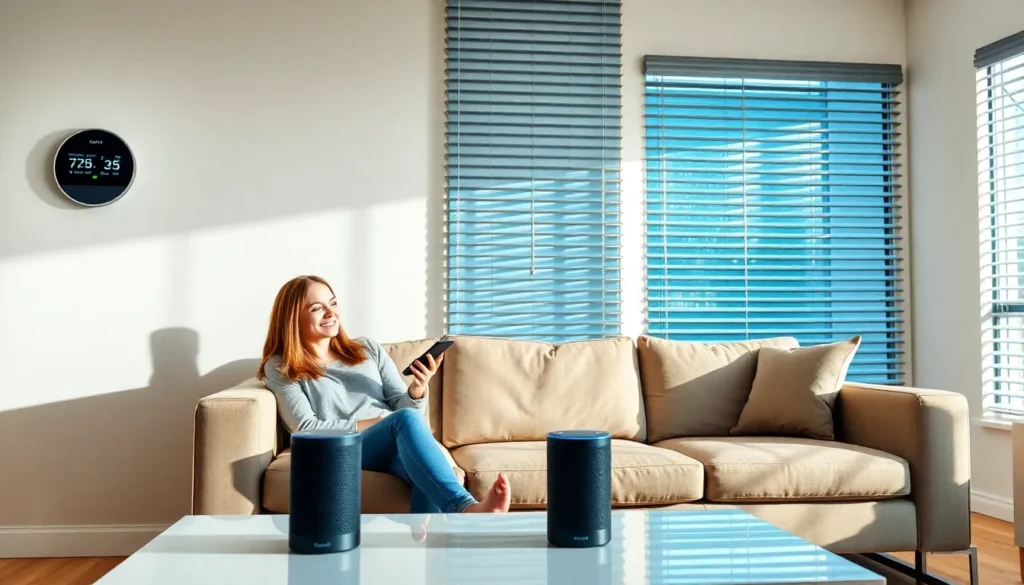Table of Contents
ToggleTransforming an attic into a cozy living space can feel like uncovering a hidden treasure. Imagine turning that dusty old storage area into a stylish office, a serene guest room, or even a whimsical playroom for the kids. With a little creativity and some elbow grease, that forgotten space can become the envy of the neighborhood.
But before diving headfirst into the world of attic conversions, it’s crucial to consider the ins and outs of the project. From ensuring proper insulation to maximizing natural light, each detail plays a role in creating a functional and inviting atmosphere. Plus, who wouldn’t want to brag about having a secret hideaway just above their heads? Buckle up as we explore the exciting possibilities of attic conversions and how they can elevate both your home and your lifestyle.
What Is An Attic Conversion?
An attic conversion transforms unused attic space into workable living areas. This type of renovation creates multifunctional rooms, such as home offices, guest rooms, or play areas. Homeowners gain extra square footage, which increases property value.
Proper planning plays a key role in successful conversions. Consideration of insulation ensures energy efficiency and comfort throughout the year. Adequate windows maximize natural light, making spaces feel welcoming and airy. Structural alterations may include reinforcing floor joists to support additional weight, especially if heavy furniture occupies the space.
Local zoning laws and building regulations influence the design and construction process. Securing necessary permits streamlines the project and avoids future complications. Collaborating with a professional designer or contractor can provide insights and help navigate these regulations.
Many attic conversions utilize creative design elements. Open-plan layouts enhance space perception, while skylights and dormer windows add character and light. Incorporating storage solutions makes the most of every square foot, keeping the area organized.
Investing in an attic conversion can significantly enhance lifestyle quality. It provides a private retreat away from common living spaces. Ultimately, this renovation adds functional beauty to homes.
Benefits Of An Attic Conversion


An attic conversion presents numerous advantages for homeowners. This section focuses on key benefits, including increased living space and enhanced property value.
Increased Living Space
Transforming an attic can significantly expand usable space. Homeowners gain extra rooms, like a study or guest bedroom, without needing to build an extension. This added square footage offers versatility, accommodating various needs. Families will enjoy a dedicated playroom or a calm retreat away from the noise. Maximizing existing space reduces the need to relocate, saving time and costs associated with moving. Utilizing underused areas efficiently allows for creative designs that align with personal lifestyles. Every inch counts in urban settings, where space is often limited, making attic conversions an appealing solution.
Enhanced Property Value
Renovating an attic can boost a home’s market appeal. Research shows properties with additional living areas often attract higher selling prices. Potential buyers appreciate the versatility and extra square footage that an attic provides. Enhanced property value stems from increased functionality, allowing for various living arrangements. Markets favor homes that offer unique spaces, appealing to growing families or remote workers. Making such improvements contributes to overall investment returns. Homeowners can expect an increased resale value, especially in competitive housing markets. Investing in an attic conversion, therefore, serves as a smart financial decision.
Planning Considerations
Planning an attic conversion involves several critical factors that directly affect the success of the project. Key areas to focus on include building regulations and design options.
Building Regulations
Building regulations vary by region, making it essential to research local codes. Obtaining necessary permits ensures safety and compliance with structural standards. Regulations may mandate specific ceiling heights, allowable floor loads, and fire safety measures. Compliance prevents future issues, such as costly modifications or fines. Always consult local authorities or professionals for guidance on zoning laws, as these can significantly influence the design and functionality of the converted space.
Design Options
Design options for attic conversions can significantly enhance functionality and aesthetics. Consider options such as open-plan layouts that maximize usable space and improve flow. Incorporating skylights offers natural light while creating an airy atmosphere. Built-in storage solutions help eliminate clutter and make the most of limited space. A dedicated home office or cozy reading nook can transform the attic into a multi-functional area. Tailoring designs to personal preferences elevates the overall appeal, ensuring the attic becomes a desirable part of the home.
Costs Involved In An Attic Conversion
Attic conversions present an opportunity for increasing living space, but understanding the associated costs is crucial for effective planning.
Budgeting Tips
Creating a budget hinges on a comprehensive assessment of all expenses. Consider prioritizing structural changes first, such as reinforcing floor joists, which can prevent future issues. Homeowners often overlook design elements, like lighting and storage, so allocating funds for these is essential. Researching local material costs can lead to substantial savings. Consulting with professionals might seem like an added expense initially, but it ensures compliance with regulations and can prevent costly mistakes. Keeping track of all expenses during the project can help avoid overspending and streamline the renovation process.
Potential Hidden Costs
Hidden costs often emerge during attic conversions, creating financial surprises. For instance, unexpected plumbing or electrical work can inflate budgets significantly. Older homes might require additional structural reinforcement to meet safety standards, contributing to increased expenses. Environmental factors, like inadequate insulation, can lead to higher energy bills, which add long-term costs. Local building codes may impose requirements that necessitate additional permits or inspections, impacting the overall budget. It’s prudent to maintain a flexible budget that accommodates these unforeseen circumstances, ensuring completion without financial strain.
Transforming an attic into a functional living space offers homeowners a unique opportunity to enhance their property and lifestyle. With thoughtful planning and attention to detail, it’s possible to create a stylish retreat that serves various purposes. Whether it’s a cozy office or a vibrant playroom, the potential is limitless.
Investing in an attic conversion not only maximizes usable space but also boosts property value significantly. By adhering to local regulations and collaborating with professionals, homeowners can navigate the complexities of the process with ease. Embracing creativity in design elements can further elevate the space, ensuring it becomes a cherished part of the home. Ultimately, an attic conversion is a smart investment that pays off in both comfort and value.







